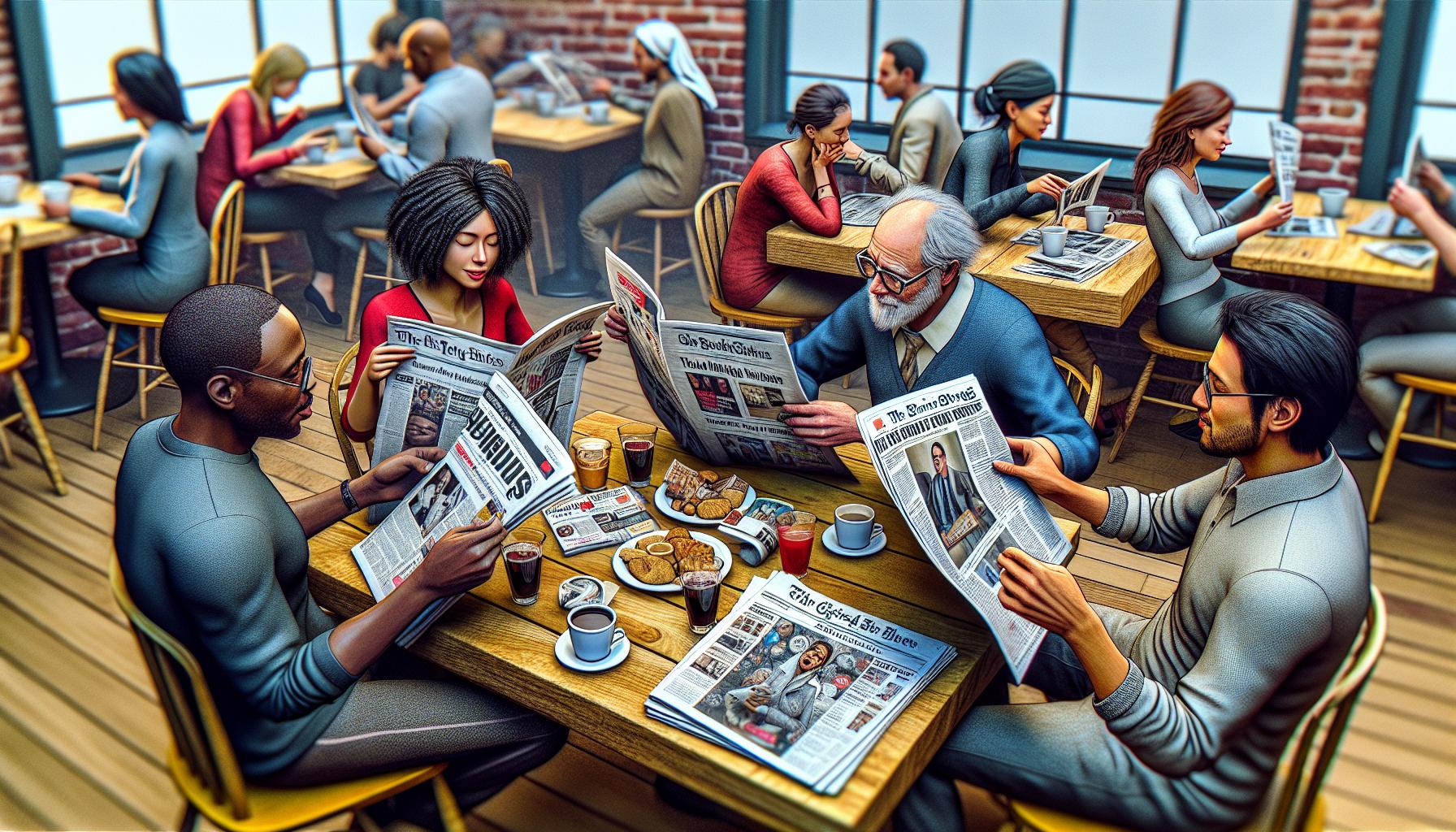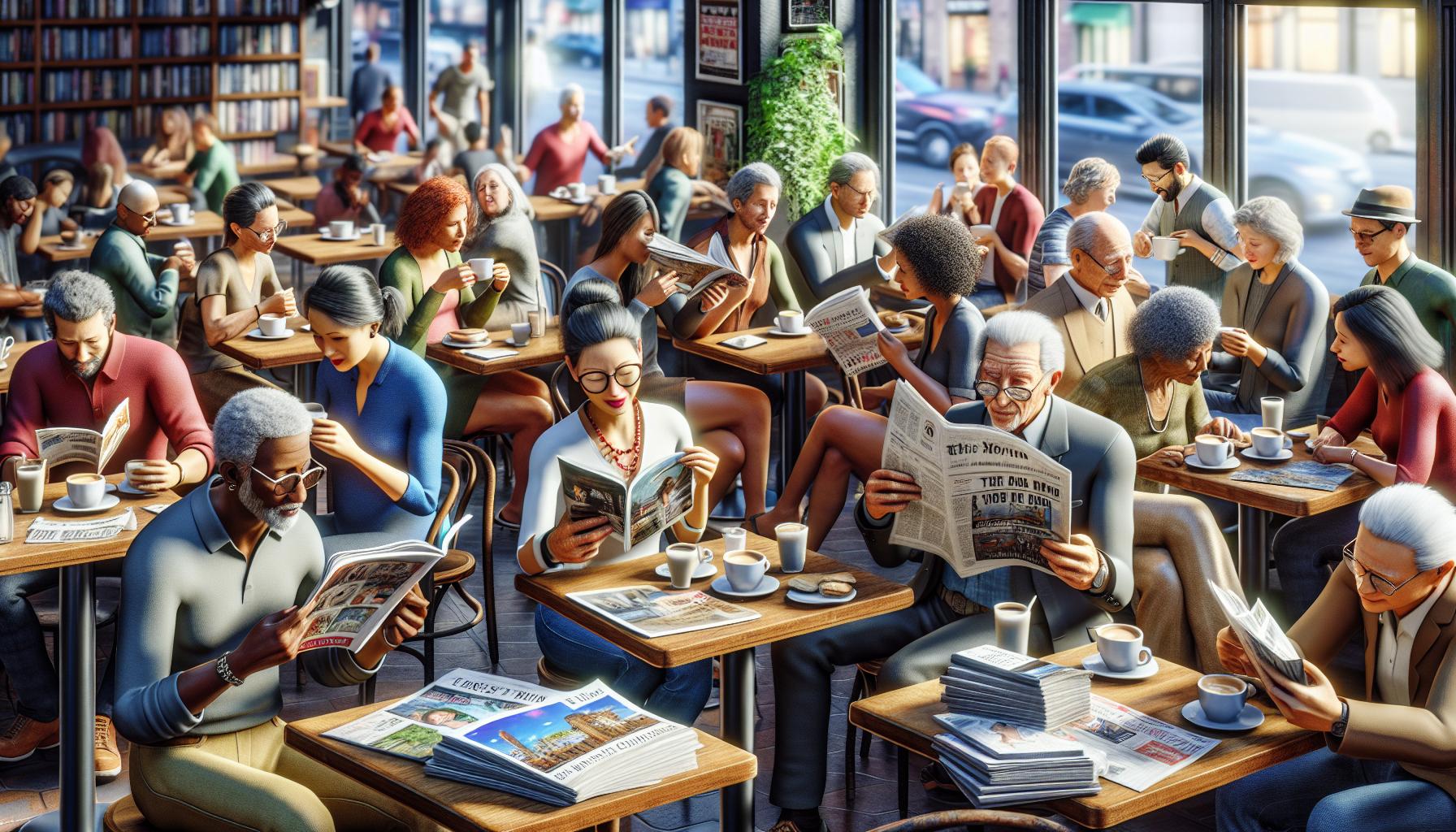Print media remains a cornerstone of mass communication despite the digital revolution. From newspapers and magazines to books and brochures this traditional form of media continues to play a vital role in delivering information to audiences worldwide.
The world of print media encompasses a diverse range of published materials that serve different purposes and cater to various demographics. While some might think print is becoming obsolete modern marketing strategies often combine both digital and print media to create comprehensive campaigns that reach broader audiences. Understanding the different types of print media and their unique advantages can help businesses and communicators make informed decisions about their media strategy.
What Is Print Media: A Comprehensive Overview
Print media encompasses physical publications produced through traditional printing methods. Print media formats include newspapers, magazines, books, brochures, flyers, catalogs, direct mail materials, newsletters, posters, billboards, directories, packaging materials, annual reports, business cards, postcards, photographs, banners.
Physical publications communicate through diverse printing techniques:
- Offset Printing: Creates high-quality images through ink transfer from metal plates to rubber rollers
- Digital Printing: Produces materials directly from digital files using toner or liquid ink
- Screen Printing: Applies ink through mesh screens for textiles, signage, packaging
- Letterpress: Creates raised impressions by pressing inked metal type into paper
- Gravure: Uses engraved cylinders to transfer ink for high-volume commercial printing
Print media serves multiple communication purposes:
- Delivers news through daily newspapers, weekly magazines
- Promotes products via catalogs, brochures, flyers
- Documents information in books, journals, manuals
- Builds brand identity with business cards, letterheads
- Advertises services through posters, billboards
Key characteristics of print media:
- Tangible format for physical engagement
- Permanent record of information
- High-resolution visual reproduction
- Extended shelf life
- Geographic targeting capabilities
- Measurable distribution reach
- Subscription delivery services
- Newsstand sales
- Direct mail campaigns
- Point-of-sale displays
- Event distribution
- Door-to-door delivery
| Print Media Format | Average Shelf Life | Typical Distribution Range |
|---|---|---|
| Daily Newspapers | 1 day | Local/Regional |
| Magazines | 1-3 months | National/International |
| Books | 5+ years | Global |
| Brochures | 3-6 months | Local/Regional |
| Business Cards | 1-2 years | Local/Professional |
Newspapers and Magazines

Newspapers and magazines represent the cornerstone of traditional print media, reaching millions of readers through scheduled publications. These formats offer specialized content delivery through established distribution networks.
Daily and Weekly Publications
Daily newspapers focus on current events, breaking news and local coverage across morning or evening editions. Weekly newspapers concentrate on community news, featuring in-depth analysis of regional developments throughout 7-day cycles. Notable formats include:
- Broadsheet newspapers (23″ x 29.5″) for comprehensive coverage
- Tabloid size (11″ x 17″) for commuter-friendly reading
- Community papers (varies) for hyperlocal reporting
- Special editions for weekend supplements
- International newspapers with multi-language prints
- Consumer magazines (Time, National Geographic)
- Trade publications (Industry Week, Engineering News)
- Professional journals (Medical journals, Law reviews)
- Lifestyle magazines (Vogue, GQ)
- Special interest publications (Photography, Gaming)
| Magazine Format | Typical Size (inches) | Average Page Count |
|---|---|---|
| Standard Size | 8.375 x 10.875 | 60-100 |
| Digest Size | 5.375 x 8.375 | 40-80 |
| Mini Size | 4 x 6 | 20-40 |
| Oversized | 9 x 10.875 | 80-200 |
Books and Literature
Books and literature represent a significant segment of print media, encompassing diverse formats that serve both educational and entertainment purposes. Print publications in this category maintain consistent readership despite digital alternatives.
Fiction and Non-Fiction Works
Fiction works include novels, short story collections, poetry anthologies and graphic novels ranging from 50,000 to 120,000 words. Popular fiction genres comprise romance, mystery, science fiction, fantasy, literary fiction and young adult titles. Non-fiction categories feature biographies, self-help books, cookbooks, travel guides and history books with typical lengths of 40,000 to 80,000 words.
| Book Category | Average Word Count | Typical Page Length |
|---|---|---|
| Fiction Novels | 50,000-120,000 | 200-400 pages |
| Non-Fiction | 40,000-80,000 | 150-300 pages |
| Poetry Collections | 20,000-40,000 | 60-100 pages |
| Graphic Novels | 15,000-30,000 | 48-200 pages |
Academic and Educational Materials
Academic print materials include textbooks, workbooks, study guides and scholarly journals distributed through educational institutions. Standard textbooks contain 12-15 chapters with comprehensive illustrations, diagrams and practice exercises. Reference materials encompass dictionaries, encyclopedias, academic journals and research publications featuring peer-reviewed content. Laboratory manuals, solution guides and standardized test preparation books provide structured learning resources with specific educational objectives.
| Educational Material | Average Length | Update Frequency |
|---|---|---|
| Textbooks | 500-800 pages | 2-3 years |
| Academic Journals | 50-200 pages | Monthly/Quarterly |
| Study Guides | 100-300 pages | Annual |
| Reference Books | 600-2000 pages | 3-5 years |
Marketing and Promotional Materials
Marketing print materials serve as tangible brand ambassadors, connecting businesses with their target audiences through physical formats. These materials create lasting impressions through strategic design and targeted distribution.
Brochures and Flyers
Brochures come in tri-fold (8.5″ x 11″), bi-fold (5.5″ x 8.5″) and z-fold formats, featuring product information, company services and promotional offers. Standard flyers measure 8.5″ x 11″ or A4 size, incorporating eye-catching graphics, promotional messaging and call-to-action elements. Distribution methods include:
- Direct mail campaigns to targeted zip codes
- Point-of-sale displays at retail locations
- Trade show handouts at industry events
- Door-to-door delivery in local neighborhoods
- Information packet inserts for new customers
Business Cards and Stationery
Business cards maintain standard dimensions of 3.5″ x 2″ in the US market, printed on card stock ranging from 14pt to 32pt thickness. Corporate stationery packages include:
- Letterhead (8.5″ x 11″) with company logo and contact details
- #10 envelopes (4.125″ x 9.5″) matching letterhead design
- Presentation folders with business card slots
- Memo pads in various sizes (4″ x 6″, 5″ x 7″)
- Compliment slips (8.5″ x 5.5″) for informal communications
| Item | Paper Weight | Standard Size | Print Method |
|---|---|---|---|
| Business Cards | 100-110 lb | 3.5″ x 2″ | Digital/Offset |
| Letterhead | 24-32 lb | 8.5″ x 11″ | Offset |
| Envelopes | 24 lb | 4.125″ x 9.5″ | Digital |
| Presentation Folders | 100 lb | 9″ x 12″ | Offset |
Specialty Print Publications
Specialty print publications target specific demographics with focused content designed for niche audiences. These publications maintain dedicated readership bases through specialized subject matter expertise.
Newsletters and Bulletins
Newsletters serve as direct communication channels between organizations and their stakeholders. These publications range from 2-12 pages in length with standard sizes of 8.5×11 inches or A4 format. Common types include:
- Corporate newsletters highlighting company achievements
- Association bulletins sharing industry updates
- Educational institution updates featuring academic news
- Religious organization bulletins with community events
- Professional society updates detailing industry developments
Distribution frequencies:
| Type | Frequency | Average Pages |
|---|---|---|
| Weekly | 52/year | 2-4 pages |
| Monthly | 12/year | 4-8 pages |
| Quarterly | 4/year | 8-12 pages |
Comics and Graphic Novels
Comics and graphic novels combine sequential art with narrative text to create visual storytelling experiences. Standard comic book dimensions measure 6.625 x 10.25 inches while graphic novels typically range from 6 x 9 to 8.5 x 11 inches. Primary categories include:
- Superhero comics from major publishers
- Independent creator-owned series
- Manga translations from Japanese publishers
- European album-format comics
- Web comic print collections
| Type | Page Count | Print Quality |
|---|---|---|
| Single Issue Comics | 22-32 pages | Standard |
| Trade Paperbacks | 128-180 pages | Premium |
| Graphic Novels | 180+ pages | Deluxe |
| Manga Volumes | 180-200 pages | Standard |
Impact of Digital Age on Print Media
Digital Transformation of Print Publications
Print media outlets adapt to digital innovations through hybrid publishing models. Traditional newspapers integrate digital editions with interactive features like embedded videos, clickable advertisements and real-time updates. Modern magazines offer both physical copies and digital versions accessible through mobile applications and websites.
Circulation and Revenue Changes
The shift toward digital consumption affects print media circulation numbers and revenue streams.
| Print Media Type | Digital Impact on Circulation | Revenue Change (2010-2023) |
|---|---|---|
| Daily Newspapers | -63% print circulation | -52% print advertising |
| Magazines | -45% newsstand sales | -38% print subscriptions |
| Books | +16% e-book adoption | +28% digital formats |
Evolving Production Methods
Digital technologies transform print media production processes through:
- Automated layout design software replacing manual composition
- Computer-to-plate systems eliminating film-based platemaking
- Print-on-demand services reducing inventory costs
- Variable data printing enabling personalized content
- Cloud-based collaboration platforms streamlining workflows
Cross-Platform Integration
Print publications leverage digital platforms to enhance content delivery:
- QR codes linking printed materials to online content
- Augmented reality features in magazine advertisements
- Social media integration for reader engagement
- Digital archives of print editions
- Email newsletters complementing physical distributions
Environmental Considerations
Digital alternatives influence print media sustainability practices:
- Recycled paper usage increased by 47% since 2015
- Print-run optimization reducing waste by 35%
- Eco-friendly ink alternatives adoption
- Carbon offset programs for printing operations
- Digital-first content planning reducing unnecessary printing
- Premium print editions with enhanced production quality
- Specialized content for niche markets
- Bundled digital-print subscription models
- Data-driven distribution optimization
- Targeted advertising partnerships
Conclusion
Print media remains a dynamic and versatile communication medium that spans numerous formats from newspapers and magazines to books and promotional materials. Its enduring presence in today’s digital landscape demonstrates its unique value in reaching diverse audiences effectively.
While digital transformation has reshaped the media landscape print media continues to evolve by incorporating new technologies and sustainable practices. The tangible nature of print materials combined with their ability to target specific demographics makes them an invaluable tool for businesses education and entertainment.
Understanding the broad scope of print media helps organizations leverage its strengths alongside digital channels creating more impactful communication strategies for the future.
